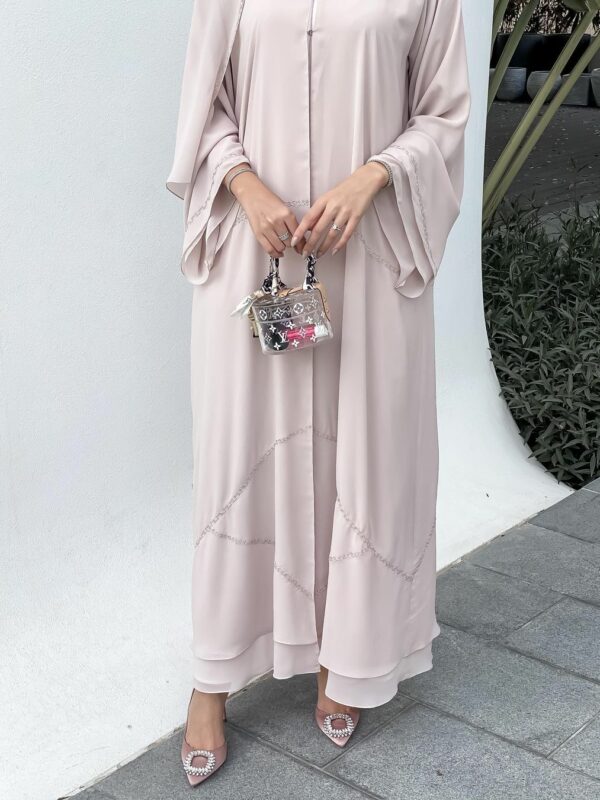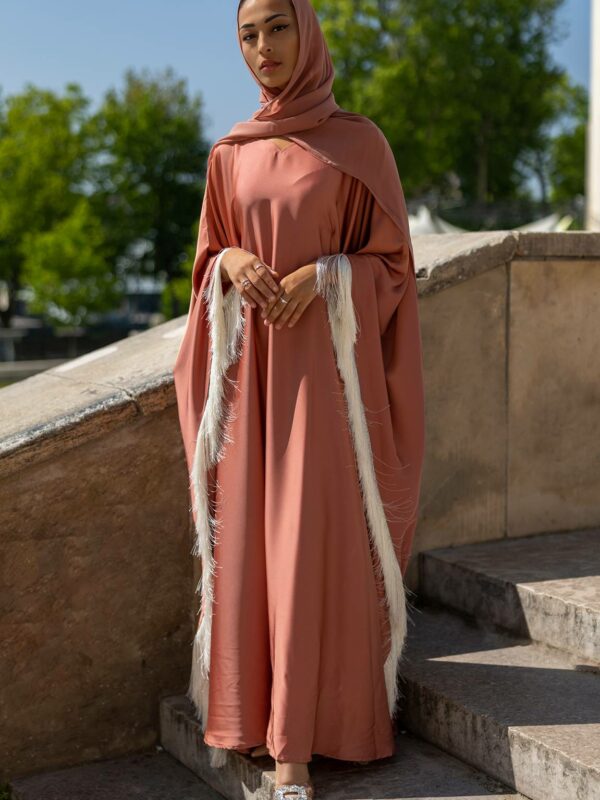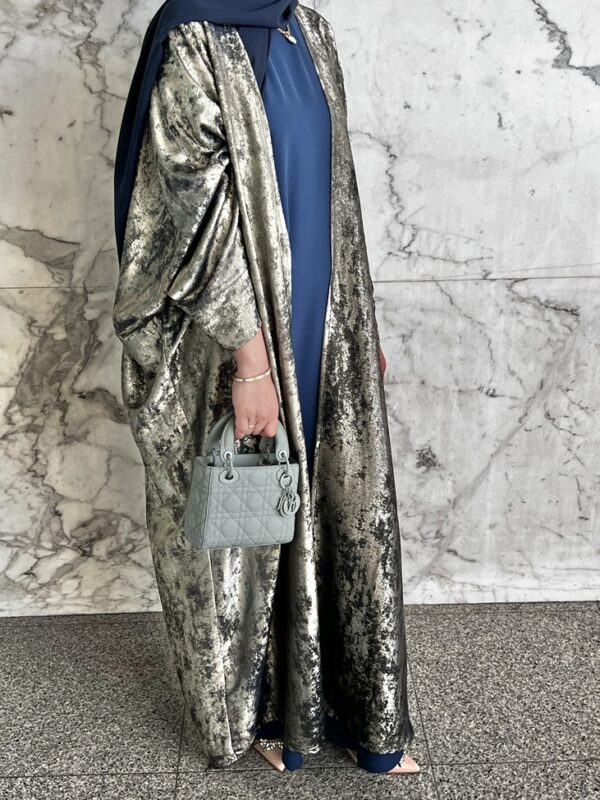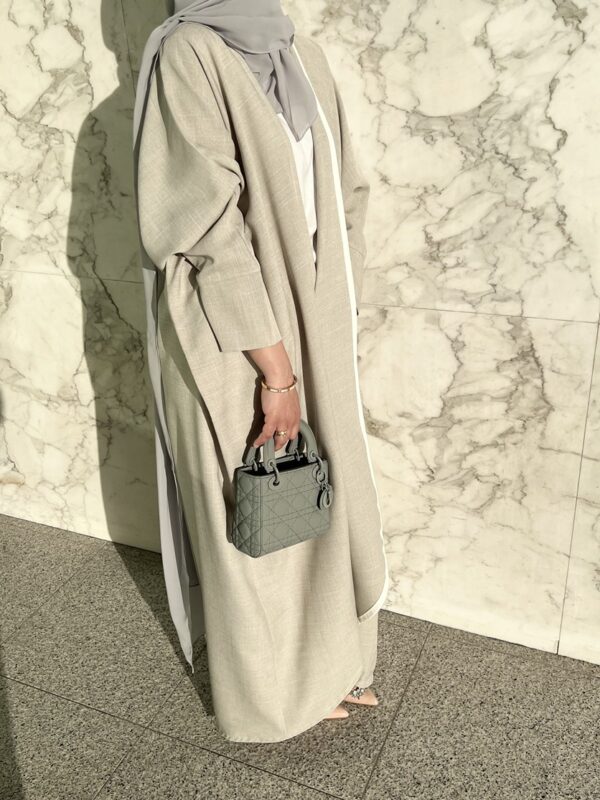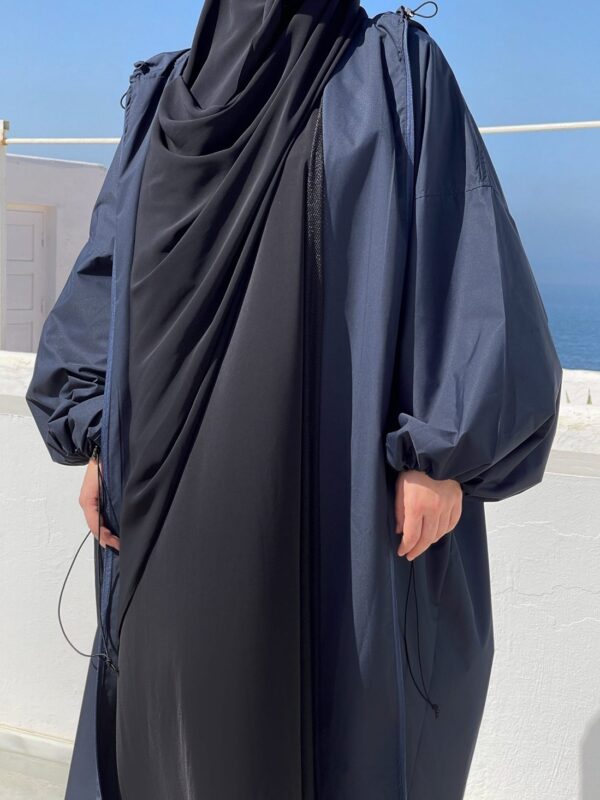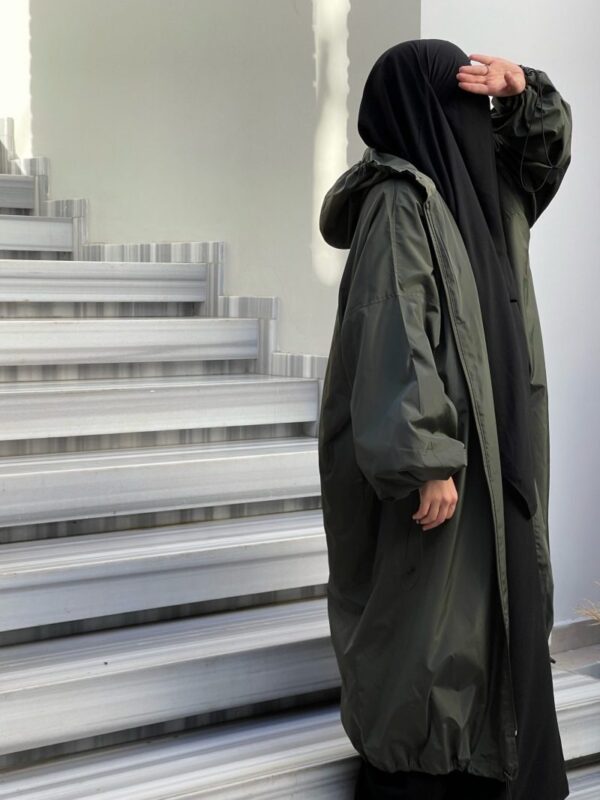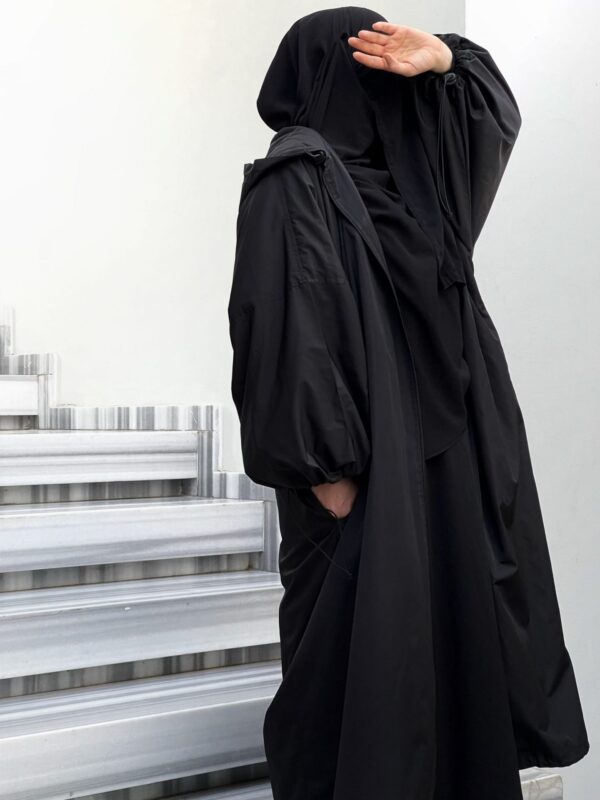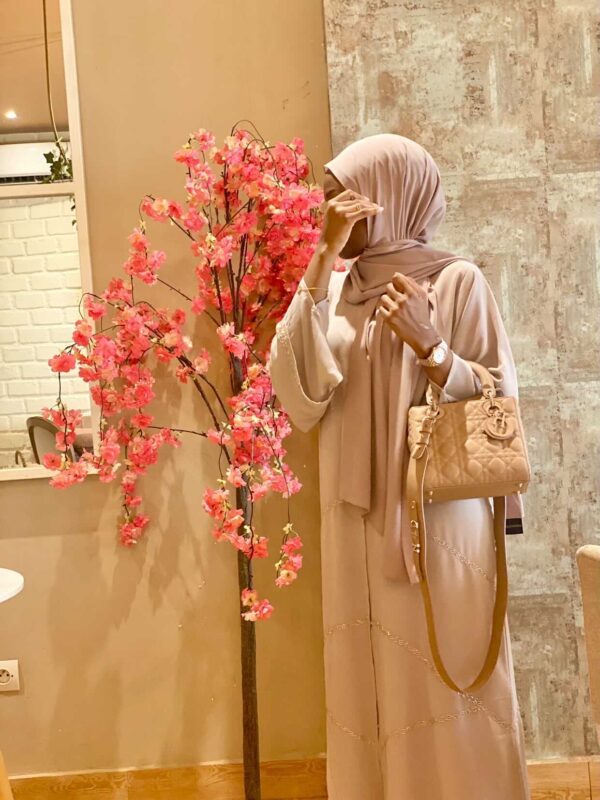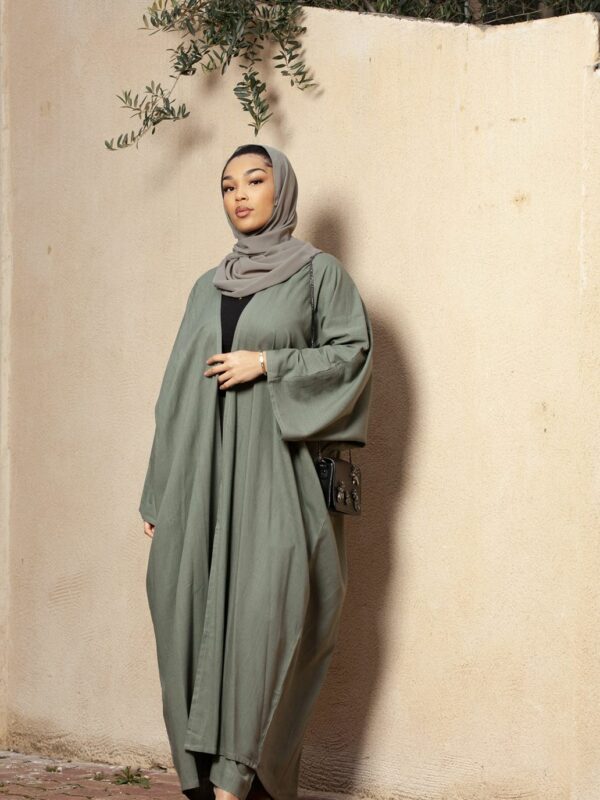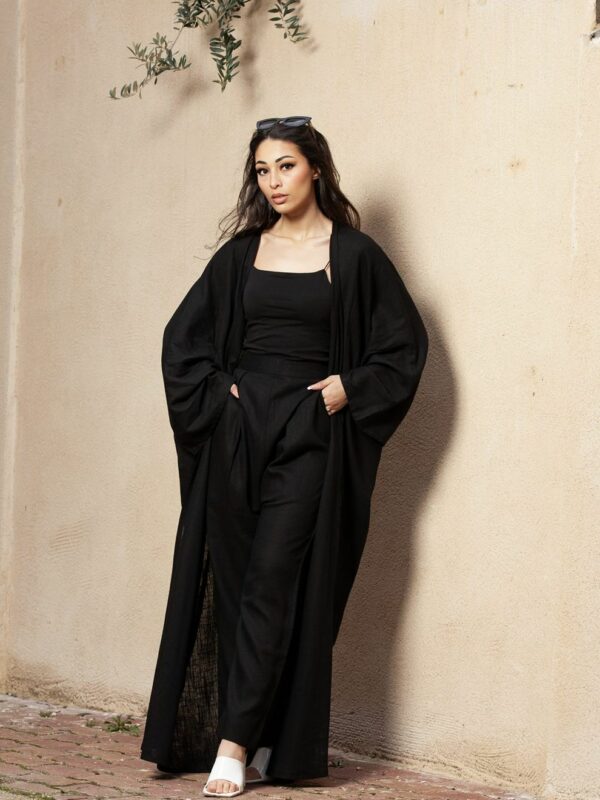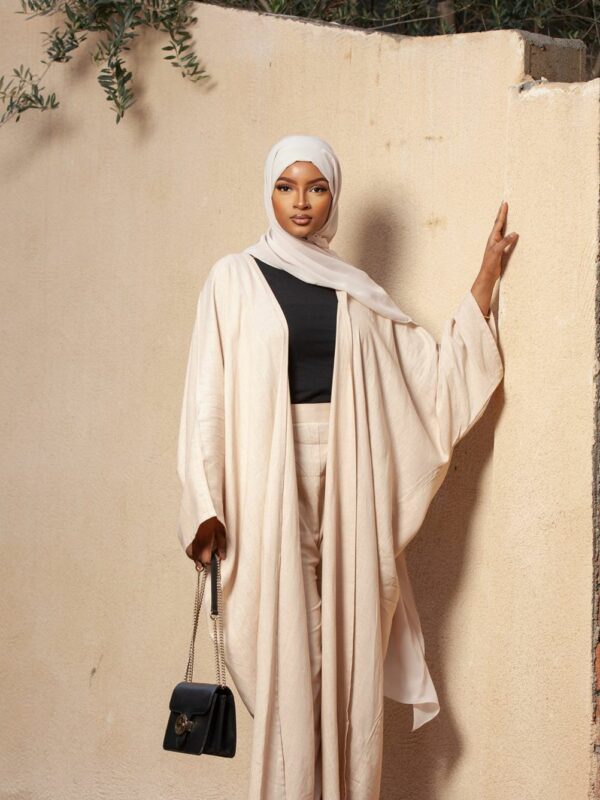Designer Abayas From France - Exclusively on The Women's Marketplace
The Designer Abaya, a fundamental clothes deeply woven into the fabric of Middle Eastern culture, has long been used as a symbol of modesty. And that’s still the case! In recent years, it has undergone a significant transformation, making a seamless transition from conventional attire to high fashion while preserving its values. The catalyst of this evolution? The rise of the “designer abaya”. This reinvention has led to the Abaya being appreciated not merely as a functional clothes, but also as a testament to the wearer’s individual style, personality, and taste. This article will delve into the intriguing world of designer abayas, tracing its evolution, exploring its features, and shedding light on its ever-growing popularity!
So, whether you’ve been wearing one for a long time or you’re just a fashion enthusiast, join us to find out why you should opt for the designer abaya! Models that allow you to be trendy.
First, the origins of abaya
The abaya is a modest outfit, a staple clothe for many women in the Middle East. We can trace its origins to the Bedouin societies. It is a flowing, loose-fitted robe often accompanied by a hijab or a khimar, except within intimate family circles. This attire holds a deep-seated position in Islamic culture and is widely embraced by women living in countries where Islam predominates.
The abaya is a versatile garment that is not only suited for day-to-day activities but is also appropriate for spiritual practices such as prayer needless to say. It embodies the principle of modesty or ‘mastour’ in Arabic, adhering to the expectations of modest dressing in Islam.
The traditional colours of the abaya have differed across regions. In the Middle East, black was and still a prevalent choice, seen as a testament to a woman’s elegance and refinement. On the other hand, the Maghreb region, depending on the city, favours white abayas, which symbolise purity and minimalism. And here at The Women’s Marketplace, we love minimalism!
What exactly is an abaya?
An abaya is a kind of long dress that many women in certain parts of the world, especially in the Middle East, wear every day. It’s a bit like wearing a beautiful, flowing cape. It covers the whole body, from the shoulders to the ankles, kind of like a princess’s gown, but doesn’t cover the head, hands, or feet. This special dress helps women express their identity.
The abaya can be crafted from several materials like Medina silk, microfibre or cotton to name but a few. It’s a convenient attire adaptable to women of diverse body shapes and sizes. Some have a belt or tie to adjust the fit, ensuring full coverage of the bust without accentuating the silhouette. Of course, you can also open and close it as you like, so you’re always more comfortable.
-
Abaya
Almas Luxury (Champagne)
£102.00 Select options This product has multiple variants. The options may be chosen on the product page -
Abaya
RANA
£59.00 Select options This product has multiple variants. The options may be chosen on the product page -
Abaya
DOHA
£102.00 Select options This product has multiple variants. The options may be chosen on the product page -
Abaya
HANAN
£102.00 Select options This product has multiple variants. The options may be chosen on the product page -
Abaya
P A R K A BLEU MARINE (Marine Blue)
£77.00 Select options This product has multiple variants. The options may be chosen on the product page -
Abaya
P A R K A KAKI
£77.00 Select options This product has multiple variants. The options may be chosen on the product page -
Abaya
P A R K A NOIR
£77.00 Select options This product has multiple variants. The options may be chosen on the product page -
Abaya
Almas Luxury (Nude Beige)
£102.00 Select options This product has multiple variants. The options may be chosen on the product page -
Abaya
Ensemble Marwa (Black)
£102.00 Select options This product has multiple variants. The options may be chosen on the product page -
Abaya
Ensemble Marwa (Beige)
£102.00 Select options This product has multiple variants. The options may be chosen on the product page
The evolution of abaya
If someone had told you 10 years ago that Dolce & Gabanna would be launching a line of abaya and hijab, would you have believed them? And yet…
Even the most popular brands are taking an interest! The abaya has evolved enormously over time. Now we have designer labels embracing the wave of modest-wear. It’s true that we sometimes find models that have lost their legalised (in Islam) side, but we also see a lot of very trendy legalised models.
Today, we find abayas that have undergone modifications that have given them a more modern and elegant look. We even see non-Muslim women wearing them because they feel so good!
Abayas can be found in a variety of colours, cuts and patterns, highlighting the creativity and individuality of the women who wear them. An increasingly common detail now is abayas that have an opening to make breastfeeding easier. There are also some made from fabrics that were rarely or never used before in modest fashion, such as linen/viscose.
Some qualities of a designer abaya
Style
When you are looking to buy a designer abaya online, it’s important to choose an abaya that reflects your style and your personality. You need to feel this abaya. Look for options that incorporate the latest trends! These elements will add a unique touch to your look and make you stand out from the crowd.
Quality
Choose fabrics that will be comfortable for you, such as Medina silk, Woolpeach and others, which you’ll find in our abayas below. Fabrics should be strong enough to withstand daily use without losing their shape or colour over time.
Uniqueness
When you buy from well-established designers, it’s not just about purchasing ready-made garments. These designers create handmade goods using exclusive techniques developed over time by skilled artisans who take immense pride in crafting something truly unique each time. No two pieces are ever exactly alike, making them one-of-a-kind garments!
Comfort
When you are searching for the perfect abaya, it’s crucial to prioritize comfort as we saw earlier. It should be comfortable to wear all day long, without feeling overly tight or restrictive on your body. Look for abayas made from breathable natural fabrics like cotton, as they allow airflow and help you stay cool, even during the summer months.
Some fabrics widely used for abaya designers
Nidha Material
The Nidha fabric is well-regarded for its lightweight, fluid characteristics and subtly glossy finish that shimmers especially when exposed to sunlight. This fabric, a popular pick in the United Arab Emirates, consists of tightly woven fibers making it incredibly soft to touch. This adaptable material can be comfortably worn in any season, although those inclined towards a warmer feel might choose caviary during the colder winter periods. For lighter shades of this fabric, it is recommended to pair it with a skirt beneath your abaya as the level of transparency may vary with color.
Wool Peach
The Wool Peach material stands as an enduring favorite, fitting for an array of products unlike many other textiles. This fabric is known for its moisture-wicking and quick-drying capabilities, making it a practical option for diverse garment designs. It is frequently used in the creation of Abayas and Khumurs due to its non-sliding nature and lightweight form. Despite its lightness, it brings a plush softness, rendering it a perfect choice for all weather conditions. Offering a matte finish and ensuring fluidity, Wool Peach adds an understated elegance to any outfit. Its popularity is partly due to the fabric’s exceptional value for money and high quality.
Chiffon
The material known as Mousseline is esteemed for its delicate, lightweight, and ethereal attributes. Created from thinly spun and loosely interwoven threads, this fabric presents a light, airy, and soft appearance. Owing to its transparency, it is typically not used on its own and needs an additional layer.
Mousseline is universally liked for its featherweight feel, particularly when draped over the head. If you find Wool Peach to be a bit heavy during summer, Mousseline serves as the ideal substitute.
Microfibre
Microfiber is a man-made material prevalent in the world of textiles, and its cost-effectiveness is one of its primary benefits. When used in abayas, this material stands out for its lightweight nature, plushness, and overall comfort, making it suitable for wear throughout the year. Its fluid consistency makes it well-suited for crafting garments. Nevertheless, it should be mentioned that microfiber may not be as durable as some other fabrics. During colder periods, microfiber provides a cozy sensation of warmth. Furthermore, its low-maintenance nature, requiring minimal cleaning and boasting quick-drying properties, solidifies its position as a practical fabric choice for abayas.
Medina Silk
Medina Silk fabric is a popular choice for the crafting of abayas, hijabs, and other attire in the modest fashion industry.
Praised for its lightweight nature, luxurious feel, and stylish presentation, this material exudes an aura of sophistication. Contrary to what its name might imply, the Silk of Medina is typically not derived from authentic silk. Rather, it’s a form of synthetic fabric designed to emulate the aesthetics and tactile sensation of genuine silk. This makes it a durable and cost-effective alternative to its natural counterpart. One of the unique attributes of this fabric is its breathability, ensuring comfort even in warmer climates.
How to Care for Your Abaya ?
How do I wash my abaya in the washing machine?
It is important to note that this method only applies to abayas without rhinestones, sequins, lace or beads.
It’s perfectly understandable to be afraid of washing your abaya in the washing machine for fear of damaging or discolouring it. However, there are suitable methods for washing your abaya safely. You can set your washing machine to a delicate programme at 30°C, ideally with the cycle dedicated to washing wool.
How do I wash my abaya by hand?
If you’re patient, we advise you to wash all your abayas regularly by hand, even those that can be machine-washed. Only use the machine from time to time to make sure your abaya stays in good condition.
Hand washing is particularly recommended for abayas with beads or other elements that can be damaged by the machine. What’s more, we strongly recommend using a washing machine for fabrics such as satin.
It’s not complicated!
- Use lukewarm water
- Soak your abaya in a basin
- Use liquid detergent to soap it up
- Rinse the fabric with lukewarm or cold water using your hand shower.
A little tip: don’t rub your fabric, just make sure the washing-up liquid soaks into it.

